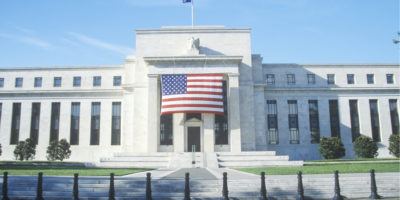How Do Bankers Create Value?
Bankers are economic vampires who take, take, take, and give nothing in return. Or at least that’s the impression you might get from a lot of popular discussions. On closer examination, however, bankers are value creators in competitive markets for loanable funds.
It is important that bank customers and bankers themselves not misunderstand their role. In what follows, I will abstract away from questions about sound money, hard money, risk management, and so on so that I can focus on exactly how bankers create value. Drawing on some of the key insights in Michael Munger’s recent book Tomorrow 3.0, I will explain how bankers and other financial intermediaries create value.
If you ask a lot of people what business bankers are in, you might hear that they are in the business of making loans. Or maybe they are in the business of building relationships. Both contain an element of truth, but they’re incomplete. Banks, fundamentally, are in the business of reducing transaction costs.
And what, you wonder, are transaction costs? The 1993 Nobel laureate Douglass C. North defined transaction costs as “the costs of specifying what is being exchanged and of enforcing the consequent agreements.”
Munger emphasizes three attributes of transaction costs: triangulation, transfer, and trust. He defines triangulation as “information about identity and location, and agreeing on terms, including price.” Transfer is “a way of transferring payment and goods that is immediate and as invisible as possible.” Trust is “a way of outsourcing assurance of honesty and performance of the terms of the contract.”
If you’re a banker, you’re actually in the business of reducing these costs. You create wealth when you’re successful. In their textbook on managerial economics for MBA students, Luke Froeb and his coauthors define the “one lesson of business”:
The art of business consists of identifying assets in lower valued uses, and profitably moving them to higher valued uses.
Bankers who move assets — loanable funds — from lower-valued to higher-valued uses are creating value (hence “profitably”). They overcome the transaction costs that otherwise gum up the works and keep assets in low-value uses.
Banking Is a Better Way
Suppose you want to open an ice cream parlor. Getting all the necessary equipment can be pretty expensive, and you probably don’t have thousands of dollars stuffed under a mattress that you can carry down to the local restaurant-supply company.
Waiting until you have scrimped, pinched, and saved enough to buy the truck and stuff would take time, perhaps a long time, and you would run the risk of getting scooped by potential competitors with access to more cash who could swoop in and open up right where you were planning to put your shop.
If you can rent someone else’s money, however, then you can get all the stuff you need and start operating — and earning money — now. But this creates another problem. It might be hard to find a lot of people with extra money they might be willing to lend you. From their end, they might not be interested in consuming right now, but they might not be interested in taking a lot of risks with their money, either. Even once you’ve found one another, how are they to know that your idea is a good one or that they can trust you not to simply abscond with the money?
And even once they have that figured out, how can they transfer the money to you safely and securely and — just as importantly — ensure that you remit your payments back to them safely, securely, and in a timely fashion?
These are big problems, but they’re problems banks and bankers solve.
First, they solve the triangulation problem by serving as coordinating hubs for people who want to borrow and people who want to lend. Do you need money to finance your ice cream stand? Just go to the bank and apply for a loan. Do you have money lying around that you don’t want to keep on hand and would like to lend to people with promising ideas in anticipation of getting back what you lent plus some interest for your trouble? Go to the bank. They’ll hold your money and do the hard work for you of finding people who need loans.
But what about figuring out whether people’s ideas are any good or whether they can be trusted with your money? This is where banks reduce transaction costs associated with trust. By evaluating the borrower’s plan and by looking at his or her credit history — which the bank can get from one of the major credit-reporting agencies — the bank can assess whether the loan is likely to be repaid. And finally, banks manage sophisticated payment-processing systems that get the money into the hands of the people doing the borrowing and get your interest payments to you in a timely and trustworthy fashion.
When banks do all of this successfully, they earn a profit. When they fail, they earn losses. And I do mean earn, in both cases. Successful banks are moving resources from lower-value to higher-value uses while unsuccessful banks are moving resources from higher-value to lower-value uses.
The real world isn’t quite this simple, of course, and too many banks survive and even thrive when they probably should have gone out of business. That’s not due to the borrowing-and-lending nature of banking, however. Rather, it is due to the banks’ influence on the political process. And that’s another subject for a future article.











